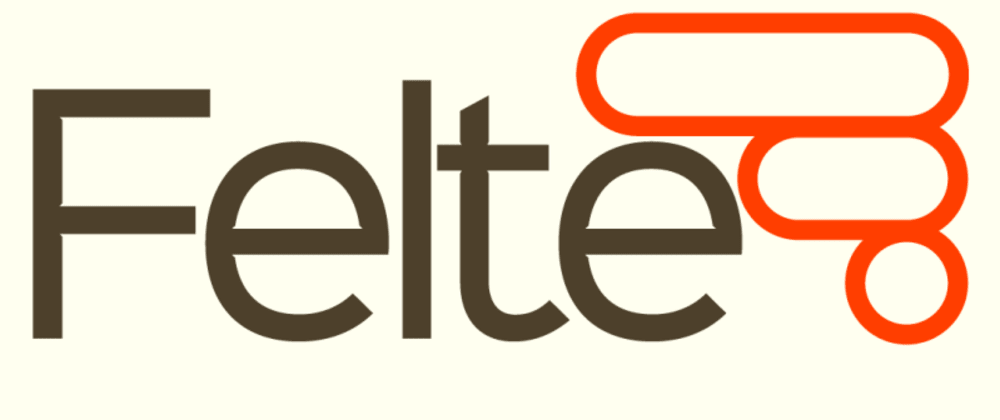This article has been updated to showcase Felte 1.0
Arguably one of the most common problems front-end developers need to solve is form handling. Specially in modern web applications that require instant validation and other real-time interactions with the user. To provide the best user experience as possible, you’ll probably grab a third party form management library to help you.
In this post I am going to write about Felte, a form management library for Svelte I have been working on for the past year that aims to make the basics of form handling on the front-end as simple as possible, while still allowing for it to grow more complex as your requirements grow.
This is one of three blog posts related to Felte. This one is oriented towards Felte’s integration with Svelte. The other two are oriented towards Felte’s integration with Solid and React.
Features
As mentioned above, Felte aims to make the basics of form reactivity as easy to handle as possible, while still allowing for more complex behaviours via configuration and extensibility. Its main features are:
- Single action to make your form reactive.
- Use HTML5 native elements to create your form. (Only the
nameattribute is necessary). - Provides stores and helper functions to handle more complex use cases.
- No assumptions on your validation strategy. Use any validation library you want or write your own strategy.
- Handles addition and removal of form controls during runtime.
- Official solutions for error reporting using
reporterpackages. - Supports validation with yup, zod, superstruct and vest.
- Easily extend its functionality.
How does it look like?
In its most basic form, Felte only requires a single function to be imported:
<script>
import { createForm } from 'felte'
const { form } = createForm({
onSubmit: async (values) => {
/* call to an api */
},
})
</script>
<form use:form>
<input type=text name=email>
<input type=password name=password>
<input type=submit value="Sign in">
</form>
We set up the form by calling createForm with our submit handler. This function returns, among other utilities, an action that can be used on your form element. Now Felte will track all inputs with a name attribute. When submitting your form, the latest values in your inputs will be passed to your onSubmit function as an object. For our previous example, the shape of values will be:
{
email: '',
password: '',
}
Where can I see my data?
As you type, Felte will keep track of your user’s input in a regular writable Svelte store. This store is returned by createForm as data, following the same shape as the values you’d receive on your onSubmit function.
For example, this would log your user’s email to the console as they type it:
const { form, data } = createForm({ /* ... */ });
// We use a reactive statement to log everytime our data store changes.
// We access the value of our store by prefixing it with `$`.
$: console.log($data.email);
I might need some validation here
Of course, another common requirement of forms is validation. If we want our app to feel snappy to the user, we will want some client side validation. createForm’s configuration object accepts a validate function (which can be asynchronous). It will receive the current value of your data store as it changes, and it expects you to return an object with the same shape as your data store containing your validation messages if the form is not valid, or nothing if your form is valid. Felte will keep track of these validation messages on a writable store that is returned from createForm as errors:
const { form, errors } = createForm({
validate(values) {
const currentErrors = {};
if (!values.email) currentErrors.email = 'Must not be empty';
if (!values.password) currentErrors.password = 'Must not be empty';
return currentErrors;
},
});
$: console.log($errors);
More complex validation requirements might require third party validation libraries. Felte offers first party integrations with some popular validation libraries through its extensibility features. These integrations are offered as separate packages. I will write write more about this in the next section regarding extensibility, but you can read more about these packages in our official documentation.
Handling complex scenarios via extensibility
Felte does not attempt to have the perfect solution on how to handle all scenarios regarding form management. This is why Felte offers an API to extend its functionality as your requirements grow more complex. You may have a preferred library you like to use, such as the really popular yup, or Vest (which was recently talked about during Svelte Summit). Or you might find it tedious to display your validation messages using if statements. Modifying Felte’s behaviour to handle these scenarios can be done via the extend option on createForm’s configuration object. More about this can be read in the official documentation. To keep things simple for the purposes of this blog post, I am only going to write about the existing packages we maintain to handle some common use cases:
Validators: Integrations with popular validation libraries
We are currently maintaining four packages to integrate Felte with some popular validation libraries: yup, zod, superstruct and most recently vest. Here I will use yup as an example, but you can read more about the rest here.
The package to use yup is on npm under the name @felte/validator-yup. You will need to install it alongside yup:
npm install --save @felte/validator-yup yup
# Or, if you use yarn
yarn add @felte/validator-yup yup
This validator package exports a function called validator which you can call with your validation schema and pass its result to the extend option of createForm:
import { validator } from '@felte/validator-yup';
import * as yup from 'yup';
const schema = yup.object({
email: yup.string().email().required(),
password: yup.string().required(),
});
const { form } = createForm({
// ...
extend: validator({ schema }), // OR `extend: [validator({ schema })],`
// ...
});
Reporters: Displaying validation messages
Displaying your validation messages can be done by directly accessing the errors store returned by createForm. Messages won’t be available on this store until the related field is interacted with.
<script>
const { form, errors } = createForm({ /* ... */ });
</script>
<form use:form>
<label for=email>Email:</label>
<input name=email id=email type=email>
{#if $errors.email}
<span>{$errors.email}</span>
{/if}
<button>Submit</button>
</form>
If a specific field has an error, Felte assigns an
aria-invalid=trueattribute to the appropriate input.
But you might not like that specific syntax to handle your validation messages. Felte currently also has four accompanying packages that offer different alternatives on how to display your validation messages:
- Using a Svelte component, which gives the most flexibility and would allow you to have access to your validation messages deep within the component tree without needing to pass the
errorsstore around. - Modifying the DOM directly by adding and removing DOM elements.
- Using Tippy.js to display your messages in a tooltip.
- Using the browser’s built-in constraint validation API, which can be less friendly to mobile users.
For brevity, I am only going to write about the first package. But you can read more about the rest in the documentation.
Using a Svelte component to get your validation messages can be done with the package @felte/reporter-svelte. You’ll need to add it to your project using your favourite package manager:
# npm
npm i -S @felte/reporter-svelte
# yarn
yarn add @felte/reporter-svelte
Then you’ll need to import both the svelteReporter function to add to the extend property, and the ValidationMessage component which you will use to receive your validation messages:
<script>
import { svelteReporter, ValidationMessage } from '@felte/reporter-svelte';
import { createForm } from 'felte';
const { form } = createForm({
// ...
extend: svelteReporter,
// ...
},
})
</script>
<form use:form>
<input id="email" type="text" name="email">
<ValidationMessage for="email" let:messages={message}>
<!-- We assume a single string will be passed as a validation message -->
<!-- This can be an array of strings depending on your validation strategy -->
<span>{message}</span>
<!-- Shown when there's no validation messages -->
<span slot="placeholder">Please type a valid email.</span>
</ValidationMessage>
<input type="password" name="password">
<ValidationMessage for="password" let:messages={message}>
<!-- If not slot is used, you'll need to handle empty messages -->
<span>{message || ''}</span>
</ValidationMessage>
<input type="submit" value="Sign in">
</form>
Next steps
You can check more about Felte in its official website with some functional examples. There’s also a more complex example showcasing its usage with Tippy.js and Yup available on CodeSandbox.
Finishing thoughts
I hope this served as a good introduction to Felte, and that it is interesting enough for you to give it a try. Felte is already on a stable state and used by some people. I am also open to help and suggestions so feel free to open an issue or make a pull request on GitHub.







Latest comments (5)
I think I'm confused on what Felte is. I see:
And I did notice in their docs that they support these validation libraries. But then what is Felte itself? Does it provide components or dynamically do the error hints or?
Felte itself provides a way to "keep track" of your form's state using a single function. In the case of Svelte this is done via an
action<form use:form>.When I say "keep track" I mean it hooks into the form, listens to all changes within it and keeps track of its values using stores. So you have access to the values your user inputs in real time via said stores.
Felte also offers a way to validate your user input. In its most basic form using a
validatefunction you would provide. But you can also use other validation libraries as you mentioned since it compatibility with them using "extenders" (basically plugins).But yeah, Felte itself can be seen as just "state management" for your form.
Thanks Pablo that's very helpful and I appreciate you taking the time to clarify for me 👍 🙏 I'll have to find some time to properly play with Felte.
thanks for sharing bro
Thanks for checking it out!